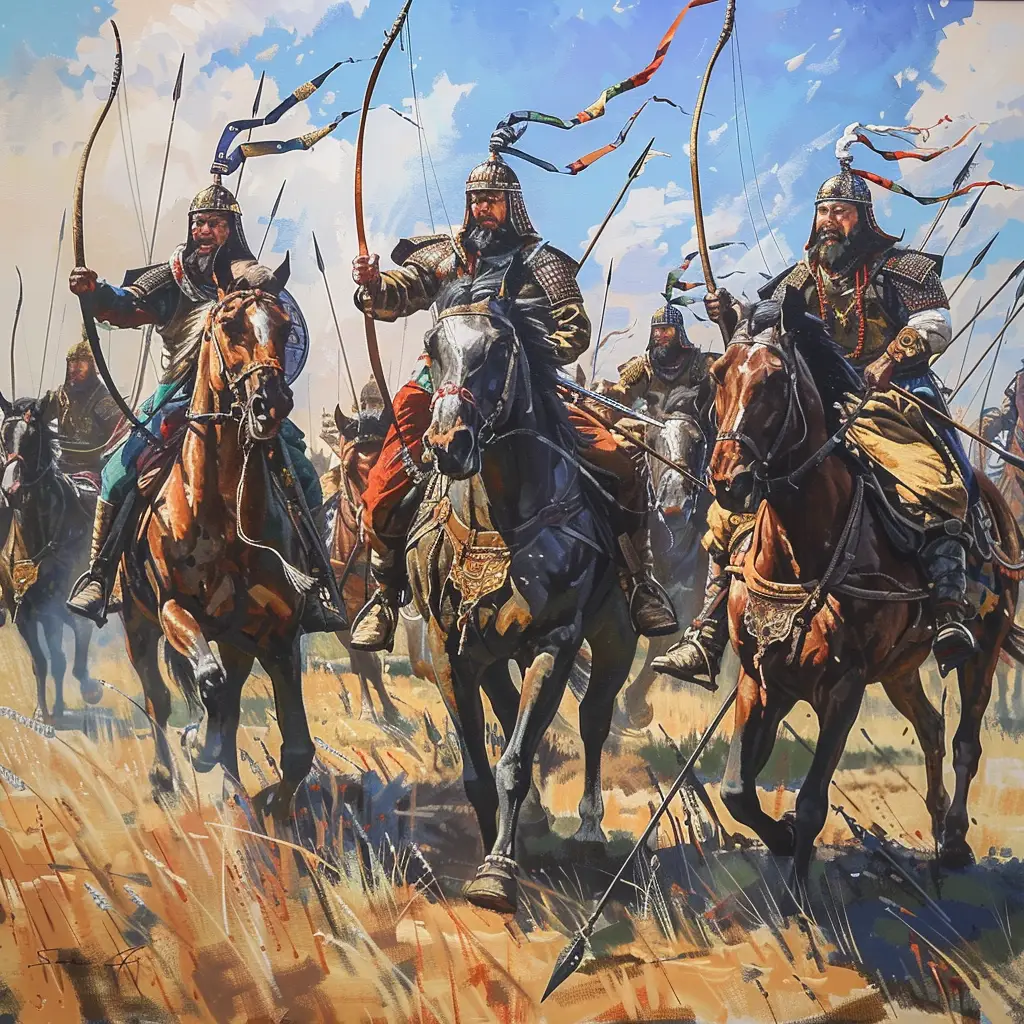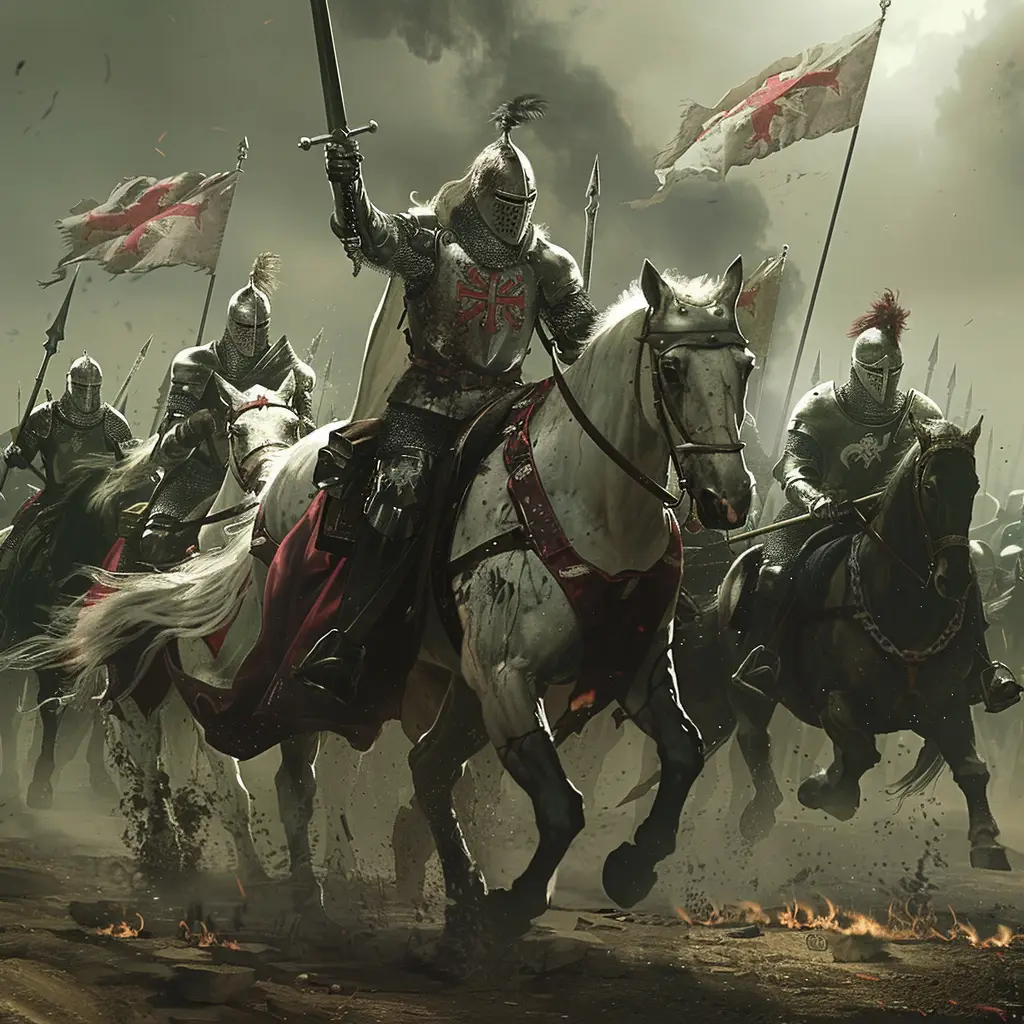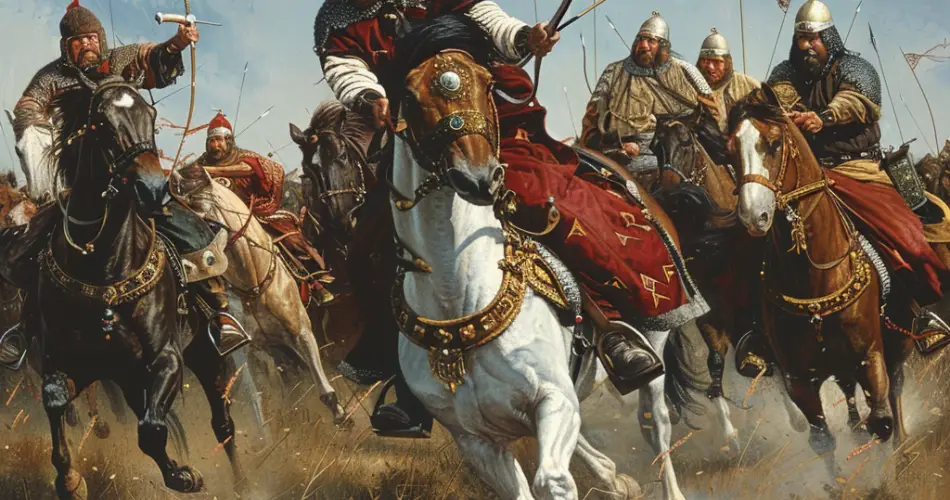Have you ever wondered what would happen if the wonderful horse archers of the great Mongol empire faced the indomitable European knights? Who would get the upper hand, and what type of tactics would each army use in the engagement? Well, you don’t have to worry any more, cause this actually happened at the Battle of Legnica.
The Battle of Legnica, fought on the 9th of April, 1241, was a key moment in European history. This battle marked a significant clash between the Mongol forces and the European defence led by Duke Henry II, known as ‘the Pious’ of Silesia. With the Mongols carving a path of destruction through southern Poland, the stakes were incredibly high for the Europeans.
The European army, composed of Polish, German forces and Teutonic Knights, faced the Mongol horse archers at Legnickie Pole southeast of Legnica in present-day Poland. Using advanced tactics and superior mobility, the Mongol warriors managed to outsmart the European Knights. The fierce battle led to the death of Duke Henry II, a significant blow to the European resistance.
This clash not only highlighted the military prowess of the Mongol Empire but also underscored the vulnerabilities of European armies at the time. The outcome of the Battle of Legnica remains a dramatic example of the far-reaching impact of Mongol invasions in Europe.
Background

After the death of Genghis Khan, the Mongols under the command of Batu Khan and the great general Subutai continued their advancement into Eastern and Central Europe intending to conquer the whole region. The Mongols had previously defeated the Turkic states of Volga Bulgaria, Cumania the Iranian state of Alania, and various principalities in Eastern Europe.
During some of these Eastern European Campaigns, many refugees fled eastwards and sought asylum within the Kingdom of Hungary. Batu Khan claimed these refugees as his slaves and requested that King Bela IV of Hungary return them to him. After the Hungarian king refused, Batu Khan declared war and began to plan an attack on Hungary.
To prevent the Poles from coming to the aid of the Hungarians, another army was sent under Orda Khan and Kadan to attack Poland and keep the Poles and other northern European armies occupied throughout the invasion of Hungary. It was the advancement of this diversionary force that cumulated into the battle of Legnica.
Political Climate in Europe
In the early 13th century, Poland was a fragmented and decentralized collection of duchies, lacking a strong central authority. This period, often referred to as the time of “Fragmentation” or the “Period of Regional Dukes,” was marked by internal divisions and competing local rulers. The lack of a strong central authority made coordinated responses to external threats difficult, and the duchies often acted in their own interests rather than in unison. This decentralized structure meant that Poland was particularly vulnerable to external invasions, as there was no unified military response or strategy.
However, when the threat of the Mongol invasion became real, Duke Henry II of Silesia made attempts to gather a coalition of forces from various Polish duchies and neighbouring regions.
King of Bohemia and Duke Mieszko II the Fat of Opole were also very concerned with the Mongol threat. They contributed men and resources to the Duke’s army. However, Emperor Frederick II, who was King of Sicily and Germany was preoccupied with his struggles in the Holy Roman Empire and was not an active participant in the conflict.
The Mongol Army
The Mongol Mongol army was majorly composed of horse archers armed with composite bows. These archers were veterans of wars in China and the Middle, east, and they were already renowned for their unparalleled speed and skill on the battlefield. The entire army was mounted and was divided into light and heavy cavalry.
The number of horse archers present at the battle is difficult to judge with numbers ranging from 100,000 to 10,000 in some sources. However, because this was a diversionary force, an estimated number of 25,000 is more reliable.
European Coalition
According to historical sources, the European coalition numbered up to about 20,000 men. Although this army had a core of well-trained Knights, a large part of the army were common folks levied from the surrounding lands and equipped with no weapons other than their tools of trade.
Also included in the European army were conscripts from Greater Poland, and Volunteer Bavarian miners from the city of Goldberg. The army was a reflection of the multi-diversity of the region as it included men from Poland, Germany, Czech, Lithuania, and Moravia. The European coalition was led by Henry II the Pious.
Knights at the Battle of Legnica

One interesting feature in the battle of Legica is the presence of European Knights, these knights were part of the feudal elite, bound by their obligations to provide military service to their liege lord. They were trained warriors, skilled in cavalry combat, and represented the military aristocracy of medieval Poland.
Three major knights orders are said to be present at the battle of Legnica, these include the Teutonic knights, the Knights of the Templers, and the the Hospitallers. These knights were heavy cavalrymen, mounted on powerful horses and formidable in close combat.
Battle Dynamics
As Duke Henry approached the battlefield, he split his army into four sections. On the right side was Calvary under the command of a Polish knight called Sulis Swath of Krakoff. The left flank of the calvary was under the command of Duke Mieszko the Second, also known as Mieszko the Fat. Duke Henry himself commanded the forces at the rear which contained both cavalry and infantry.
The Mongol army on the other hand was made up of heavy cavalry in the center, and light cavalry on the flanks.
Course of the Battle
Early Engagement
The first exchanges between the two armies were entirely predictable given the Mongols’ success in previous battles. Duke Henry intended to engage the centre of the Mongol army, so he sent his vanguard forward. However, the mobile Mongol horse archers unleashed their arrows on the Knights. This initial advance was a total disaster for the Polish army and they had to retreat.
The Duke Changes Tactics
Changing tactics, the Duke decided to order his flanks to attack. However, as the Polish cavalry advanced, the light cavalry of the Mongols feigned retreat to pull the Polish flanks further away. Since the Polish calvary no longer had the protection of the main force, the Mongols were able to manoeuvre behind them and cause chaos in the Polish rank. There is a report that one of the Mongol horsemen rode around shouting “Run! Run!” in Polish, causing some of the Polish cavalrymen to retreat further causing chaos in the Polish army.
With Duke Henry witnessing the failure of his vanguard and then his flanks, he had to make the decision to advance the rear guard and the Knights under his own command. The Mongols retreated again, drawing the Polish forward, and leading the Duke to believe he was achieving some success. The Mongols had gathered large piles of reeds at strategic locations, and as they retreated, they set these reeds ablaze and used the smoke to further disorient the Polish. Convinced that the Polish had advanced enough, the Mongols turned and rained arrows on the Polish army.
Mongols Win
Now completely surrounded, the Polish army could not organize any form of systematic retreat. The formidable European knights could not get their hands on the mobile Mongols and were cut down by the Mongol arrows before they could even get a chance to fight.
Mieszko the Fat was forced to abandon the rest of the army and flee. The opposite flank commander Silly Swat of Krakoff was slaughtered in the battle. The Grand Duke Henry II the Pious bravely tried to fight his way out of the Mongol trap. While attempting to break out, he was struck in the arm by a spear and subsequently beheaded.
The Mongols sliced off the right ear of each of the killed Europeans. They also put the head of the Duke on a pike and paraded around the town of Legnica in a show of strength.
Aftermath and Legacy
The Battle of Legnica had significant repercussions for Europe, particularly in terms of the spread of Mongol influence and the reshaping of regional power dynamics. It also left lasting historical assessments regarding its impact on Polish and European history.
Consequences for Europe
The Mongol victory at Legnica in 1241 sent shockwaves through Europe. It highlighted the vulnerabilities of European armies and stirred widespread fear. The Mongols initially aimed to conquer regions like Poland and Hungary, but they abruptly turned back, halting their advance into Central Europe. This retreat meant the immediate threat subsided, but the looming fear of another Mongol invasion persisted.
Cities such as Kraków, Wrocław, and Sandomierz had to rebuild and fortify, investing heavily in defences against possible future attacks. The chaos ushered in by the Mongols also indirectly enhanced the Roman Church’s influence, as people turned to faith for solace and protection. The inability of European leaders to unite against the common threat is often cited as a forerunner to later, concerted efforts to unify against invaders.
Historical Assessments
Historians regard the Battle of Legnica as a turning point in the Mongol Invasion of Europe. The battle reinforced the effectiveness of Mongol military tactics, which many European armies struggled to counter. For Poland, the defeat at Legnica marked a sobering moment that prompted future military reforms and strategic alliances.
The battle’s legacy in Polish history is profound. It is seen as a catalyst that sparked the eventual unity of Polish territories under stronger central governance. Cities like Opole and the Moravian lands, which were affected during the invasion, later became integral in shaping the Polish state. The cultural memory of the battle and the role of Polish leaders in resisting the invasion are commemorated in Polish national narratives, highlighting the enduring impact of Legnica on the region’s identity and resilience.
